
I've watched horror movies my entire life, and would be hard-pressed to give an accurate number of how many I've seen. It's easier to say that during the glory years of video stores in the 80s and 90s, my best friend and I had sometimes seen every horror movie in the store and had to wait for new ones to come in. Similarly, while working at a used book and media store that had an extensive DVD and yes, VHS selection, it was sometimes a challenge to find something new. But by then, when I was in my 30s and 40s, I had seen enough that I started to have discerning taste. Sure, I could find something I hadn't seen, and now with streaming services I can also usually find something I haven't seen, but especially now when a film can actually be made with a smartphone, there are a lot of movies out there that may not be worth the time it takes to watch them. I've been tired of found footage films and movies where teenagers are killed during a party or while camping (aka "dead teenager films") for a while now. But over the years I've made a list of films that really stand out, and it's so extensive, I break it down by decade, starting with the earliest films, in the silent era, and the 30s and 40s.
Silent Era
If you' ve never watched a silent movie, give them a chance. After about five minutes you get used to reading the dialogue rather than hearing it, and they have a certain charm. Now that we've watched a few, my wife has asked that we try to track down more. There's a lot to be said for films that scare you with lighting and atmosphere, not jump scares and underlying sounde effects meant to keep you on edge, and these films do it.
"Nosferatu"

Loosely based on Bram Stoker's novel, "Dracula," this German film follows some of the plot of the novel, but due to not having the rights of the novel, changes the names, as well as greatly reducing the number of characters. You've undoubtedly seen images from this film countless times, and it remains one of the most influential, terrifying films of all time. This vampire doesn't glitter, and there's no sexiness to the story at all. This is truer to the folklore that a vampire is an undead corpse.
"The Cabinet of Dr. Caligari"

Also a German film, the plot of this film really isn't important. What you need to know is it's a disturbing visual nightmare. A fever dram full of odd angles where nothing is quite right.
"Phantom of the Opera"
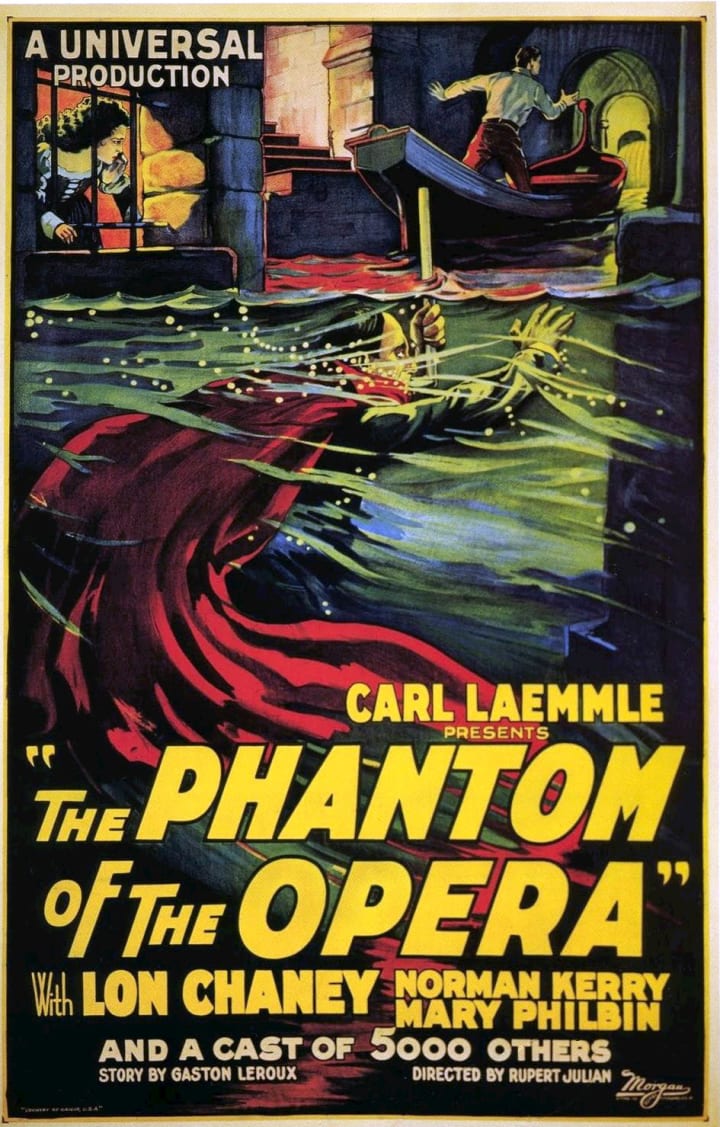
Redone multiple times as a film, a musical, and a film based on the musical, they all have their value, but this one is the masterpiece. If you watch just one film starring the legendary Lon Chaney, Sr., make it this one. Chaney always developed the makeup effects for his roles himself, and in the film's latter, "Masque of the Red Death" scene, he hand-colored the master prints of the film red to provide color at a time when black and white was the only kind of film available.
1930s and 40s
"Island of Lost Souls"
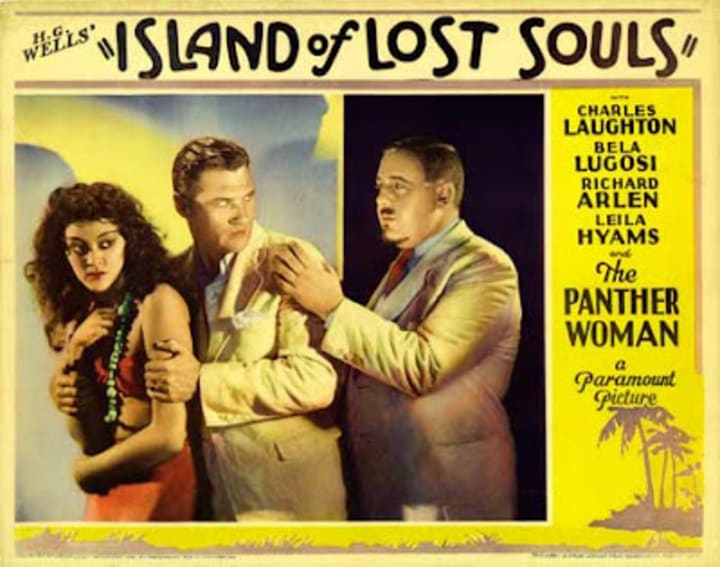
The first adaptation of the novel "The Island of Dr. Moreau" by H.G. Wells, this film depicts a group of sailors who go to an island run by a doctor who has been creating hybrid animal-men. The animals are treated like slaves, and when they misbehave they go to "The House of Pain." As all great horror and sci-fi pieces do, this film asks a lot of questions about morality, including if it's right to fall in love with a woman who is mixed with a panther. Featuring a great performance by Bela Lugosi as the leader of the Animal Men, standing up for their rights.
"White Zombie"
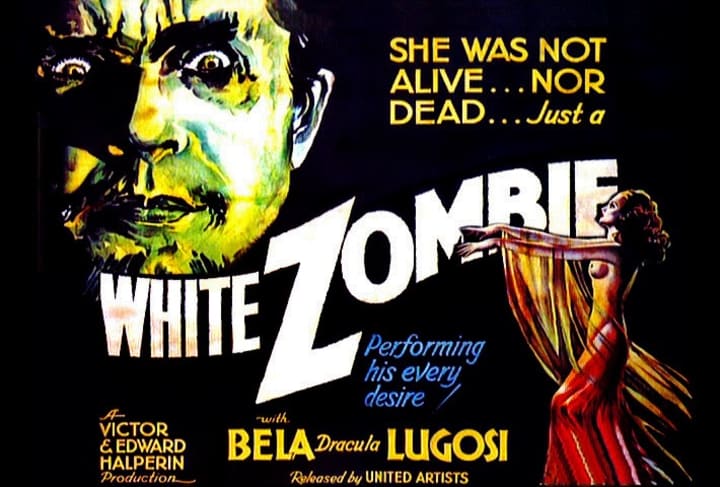
A legendary film, and the inspiration for the name of Rob Zombie's previous band, it is the very first film in which the word "zombie" is used. I recently saw this for the first time and was shocked by how good it was. The plot involves two young people travelling to Haiti at the bequest of a local sugar plantation owner. The young man is there for business, but the young woman is there to be married, except they fell in love with each other on the voyage there. The plantation owner turns to a local shady character (Lugosi) known for having magic abiliites, including the ability to create zombies, who are used as free labor for the sugar mill. Lugosi's character agrees to make the young woman marry the plantation owner, but the price is that she will become a zombie herself. Given that the film is more than 85 years old, it's remarkably well done, from sets to makeup to acting, and it actually is frightening. These are not brain-eating zombies as have been seen in countless films since the 60s, these are undead slaves, doomed to an eternity of mindless obedience, and you have to wonder if any part of the person's mind is inside, screaming to get out.
The Universal Monsters
These are the inconic characters everyone knows, with the looks that everyone is familiar with, in the films that have inspired and frightened generations of viewers. Sure, the films have been done and redone over and over again, and each of these have plenty of sequels, but the films I include here are the best of the bunch.
"Dracula"

Lugosi had already played Dracula on stage for years before he did the film, and he didn't star in any of the main sequels, but that's fine. The sequels had nothing to do with Bram Stoker's novel, while this film does a decent, though abbreviated adaptation of it. Sure, when you see Dracula fly about as a bat, you know it's not a real bat. But when you see Dracula descend a staircase covered in cobwebs, and he walks right through them, that's still an amazing effect, and the performances are all top-notch. Lugosi is absolutely the star, but his servant, Renfield, steals every scene he's in, particularly the eerie scene where he comes out of a ship's hold, the epitome of complete madness.
"Frankenstein"
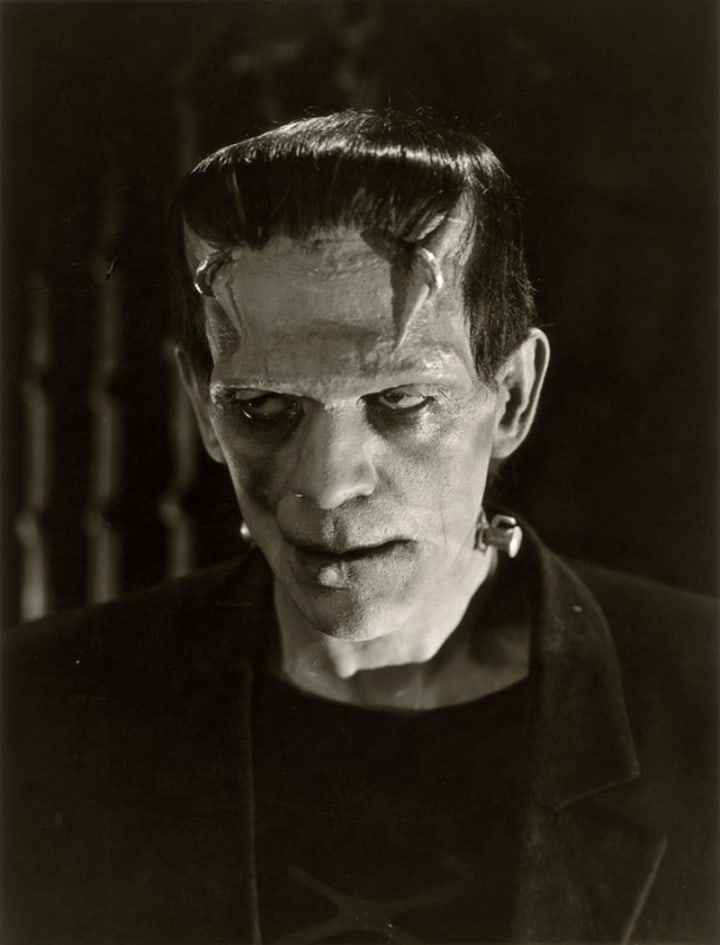
Similar to "Dracula," "Frankenstein" tried to do an adaptation of the original novel, but in the 1930s, there was no way they had the budget to shoot on location in the Arctic, or to convincingly recreate it on film. So the plot is simplified a bit, but it hits all the notes it has to hit. Dr. Frankenstein (Colin Clive) in a quest to reanimate dead tissue, reanimates a man, but mistakenly uses an abnormal brain, thus introducing a powerful monster into the world that is more than capable of killing. Karloff does an excellent job of showing the monster both as a peaceful being with the mind of a child, and as a fearsome killer. The film still has impact with every repeated viewing.
"Bride of Frankenstein"

Karloff only reprised his role as the Monster once, in this direct sequel masterpiece some say is even better than the original. In this, the Monster tells Dr. Frankenstein he does not want to be alone, but he is shunned by all of humanity. So he wants a mate that is reanimated, like him. Frankenstein hesitantly complies, but we learn that beneath his objections, he wants to do it. He wants to ecreate his experiment, with better results, because in the end, the monsters have no say in being reborn as twisted things, the real monster is the one who makes them. We also learn the lesson that you can create a mate for someone, but if that mate still has a working mind and will, they may not want to be a mate.
"The Wolf Man"

As with the other classic monster films, there have been many, many werewolf films after this one, including a remake with Beneicio del Toro and Anthony Hopkins. I love both those actors, especially Hopkins, but despite their talents, that remake lacks the simplicity and heart of the original, which stars Lon Chaney, Jr. as Lawrence Talbot, an American visiting England who is attacked by a wolf, and afterwards finds himself transformed into a werewolf. Out of all the Universal monsters, The Wolf Man as portrayed by Chaney is probably the most sympathetic and haunted. All he wants to do is either live like a normal man or die like one.
"Frankenstein Meets the Wolf Man"
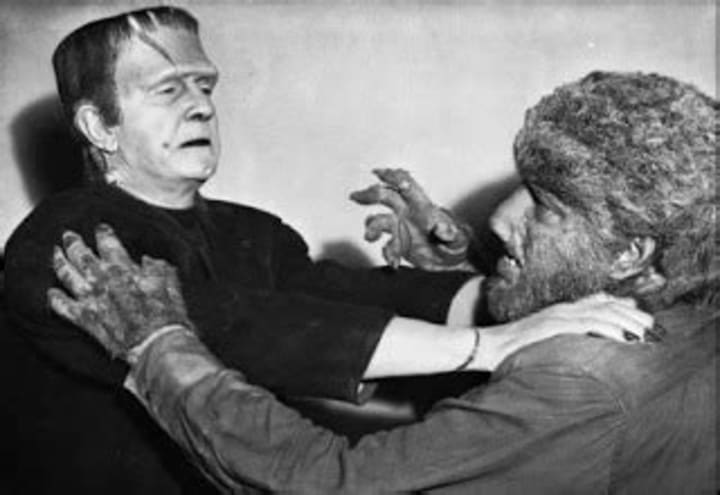
This film did what The Marvel Cinematic Universe did, roughly 65 years later - created a series of films where main characters could appear individually, or together. Serving as a direct sequel to both "Bride of Frankenstein" and "The Wolf Man" here we see for the first time someone else portraying the monster, but Lon Chaney Jr. is still the Wolf Man, each breaking ground for the first but not last time as both monsters survive the seemingly fatal ends seen in the previous films. Further multiple encounters ensue, such as "House of Dracula" and "House of Frankenstein", but each sequel has diminishing returns after this high water mark team-up.
"Invisible Man"
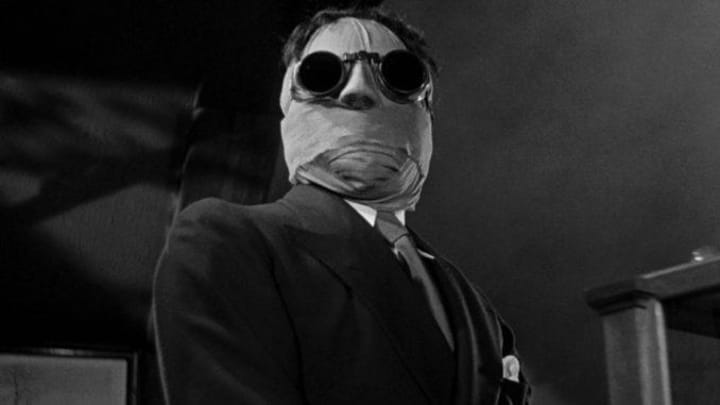
Based on the novel by H.G. Wells, this film depicts a scientist who successfully makes himself invisible, which sounds great, except the process also makes him insane. He becomes a megalomaniac, and quite homicidal while still highly intelligent. That concept is terrifying, and it has proven terrifying in each of the sequels and remakes over the ensuing decades. But what is also impressive is how convincing the effects are. There was no CGI in 1931, no blue screen, yet we see a man unwrap bandages from his face to reveal nothing beneath. We also see my favorite effect, a cigarette being held in mid-air, with smoke being drawn into and blown out of an invisible body. Someone at some point must have done a book or article about how this was done, but I don't want to look it up. I prefer to be amazed, every single time.
"Creature from the Black Lagoon"

The Creature, or Gill-Man as he's also called, stands out because he was a relative latecomer to the party. The rest of the Universal monsters all debuted a decade or even two earlier, while this film didn't debut until 1954. Still, the Creature quickly became an icon, and in true Universal fashion, was a sympathetic villain. Scientists in South America are on a river when they find and capture The Creature, who appears to be a previously unknown evolutionary link between fish or reptiles and humans. In fact, the Gill-Man is human enough to fall in love with the fiancee' of one of the scientists, risking himself to be with her. This film was recently expanded upon and remade as the Oscar-winning film "The Shape of Water" by Giullermo del Toro.
"The Mummy"

This film established Boris Karloff as a second iconic monster, and it gives him a bit more acting to do than he had in the Frankenstein films, as he plays both the titular monster cursed to undead eternity and a Imhotep, the same undead Mummy sans bandages. There was always something a bit silly about the Mummy. He moves slowly. He doesn't have claws or fangs like Dracula or the Wolf Man. He isn't super strong like the Frankenstein Monster. He just stalks you down and either chokes you to death or carries you away. But like his counterparts, he is essentially unstoppable, which in itself is terrifying, as his appearance. People clad in rotting bandages look frightening, but to his credit as an actor, Karloff as Imhotep has so much presence that he's even scary standing still wearing normal clothing and a fez.
Next: The 1950s and 60s
About the Creator
Gene Lass
Gene Lass is a professional writer, writing and editing numerous books of non-fiction, poetry, and fiction. Several have been Top 100 Amazon Best Sellers. His short story, “Fence Sitter” was nominated for Best of the Net 2020.


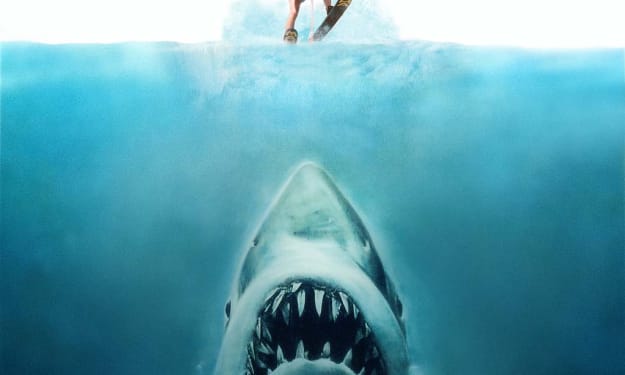



Comments
There are no comments for this story
Be the first to respond and start the conversation.